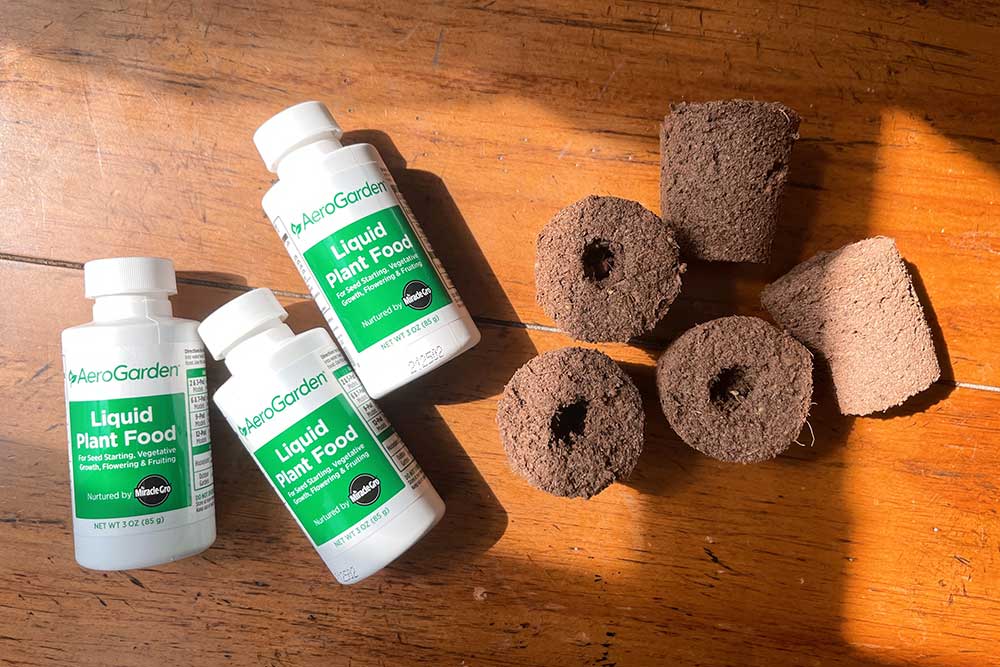
Aerogarden Nutrients
Today I wanted to do a deep dive into Aerogarden nutrients.
When you first buy one of the company’s gardens, they come with a small bottle of liquid ‘plant food’.
The formula is a combination of various mineral salts – essential nutrients that plants need in order to develop roots, grow leaves and form fruit.
I’ll cover:
- what’s in the Aerogarden nutrients
- why they’re essential
- my nutrient feeding routine
- and alternative hydroponic nutrients you can use!
Aerogarden Liquid Plant Food
Aerogarden’s liquid plant food is one of the easiest to use.
First, start your garden by either planting pods or your own seeds.
Aerogarden recommends a half dosage of the nutrients at set up but I actually would recommend using just plain water – no nutrients.
Every seed has the essential nutrients that the baby seedling needs to sprout and get started. Using liquid plant food at this early set up stage is overkill.
I like to wait until the seeds have sprouted and the baby plants have grown to the height of the dome.
Then I start adding nutrients and continue adding them (roughly on a 2 week schedule).
The nice thing about Aerogarden’s gardens is they have a 14 day monitoring schedule so that the machines can remind you to add more nutrition every 2 weeks.
The amount of nutrients to add depends on the size of the garden.
Or more accurately, the size of the water reservoir.
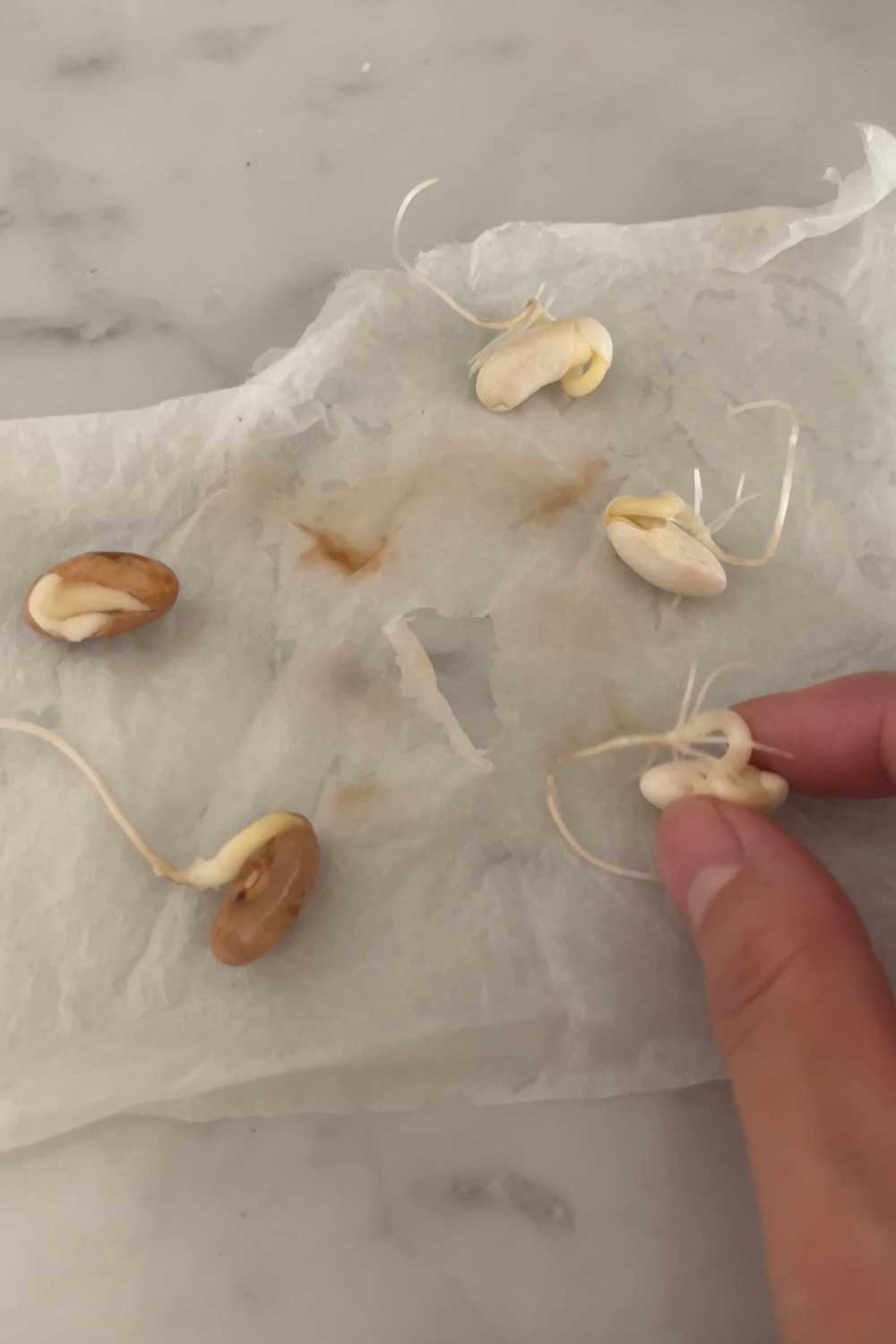
newly sprouted baby bean seeds that I planted in the Aerogarden. I typically wait until the seedlings have reached the height of the clear domes to start adding nutrition
Aerogarden Nutrient Amounts
Here’s how much nutrition to feed each Aerogarden model:
| Model | Amount | Capfuls |
| Aerogarden Sprout | 4 ml | 1 capful |
| Aerogarden Harvest | 8 ml | 2 capfuls |
| Aerogarden Bounty | 12 ml | 3 capful |
| Aerogarden Farm | 24 ml | 6 capful |
Note: hydroponic nutrients are measured by water volume, not the number of plants you’re growing.
So even if you’re only growing 3 plants in a 6-plant capacity Harvest, you’ll still want to add 2 capfuls of liquid nutrients.
bok choy + eggplants are heavier feeders
In actuality, I’ve found that the amount of nutrients needed varies depending on the plant type.
Herbs and lettuces are pretty easy going and can grow quite nicely with minimal nutrients.
Other types of plants are heavy feeders and greedy!
For those, I often top up the nutrition more frequently than every 14 days.
But what exactly are these nutrients?
What’s in Aerogarden Nutrients
Aerogarden’s liquid plant food is the company’s proprietary blend of nutrients.
It contains 16+ essential mineral salts, including:
- Nitrogen
- Potassium
- Calcium
- Iron
- Magnesium
All in One, Buffered Fertilizer
All of these are naturally occurring minerals that plants need in order to flourish. I guess you can think of them like plant ‘vitamins’.
There aren’t any pesticides or herbicides in the nutrients, just minerals.
Aerogarden liquid nutrients work really well as an all-in-one general purpose fertilizer. They can be used during the entire plant life cycle:
- seed starting phase
- vegetative growth phase
- flowering and fruiting
Can You Use Aerogarden Plant Food for Houseplants?
You can also use Aerogarden liquid nutrients for your other houseplants or outdoor gardens too!
Just follow the directions on the bottle, as you need to add some water and dilute the strength a bit for plants growing in soil.
When not in use, you’ll want to store the nutrients at room temperature, 60-80 °F (16-26 °C).
Plants will tell you when they’re suffering. Yellow leaves on the left due to lack of plant food vs healthy green leaves after re-balancing the nutrition
Nutrition is Critical
Indoor gardening is different from growing outdoors in soil.
Outside, plants will develop extensive root systems, pushing through the soil to search out essential macro and micro nutrients for growth.
That’s why soil quality matters so much with outdoor gardening (and why people compost).
Poor quality soil, devoid of nutrients, will lead to small, stunted, flavorless vegetables.
Indoors, the concept is similar – your indoor plants will still need the same 13+ macro and micro nutrients to develop properly – but the format and execution are slightly different.
Read more: Indoor Gardening: What You Need to KnowPlants grown in water don’t need to fight through soil to find their nutrients.
Water roots can easily absorb the nutrition you add, so you end up using smaller quantities of plant food for indoor gardening compared to soil gardening.
You also use significantly less water.
The growing conditions indoors are also much more controlled. Each Aerogarden maintains a steady light schedule, with daily aeration through the water pump.
The only factor you need to maintain is the nutrition.
So essentially, by controlling growing conditions and giving plants easier access to nutrients, plants grown in hydroponic gardens will often grow much faster than plants grown in soil.
Aerogarden claims their studies show 5x faster growth with hydroponics compared to traditional soil gardening.
Just remember – you need to stay consistent with nutrient feeding!
Sometimes I see people complain online about their Aerogarden veggies tasting bland. Usually that’s because they messed up the nutrition…
healthy roots in the Aerogarden Farm – roots can get slightly stained by the liquid plant food but should still look white and healthy!
Aerogarden Nutrients and Water
One variable to consider is the source of your water.
Aerogarden says that their liquid nutrients include a patented pH buffer so that no matter where you are in the US, most tap water will be in the right range for healthy plant growth.
In actuality, I’ve found that varying qualities of tap water can impact your plants.
I’ve noticed a difference in the health of my plants grown in New York City vs when I’ve grown them in New Jersey.
I couldn’t figure out why at first, until I realized it must be due to the tap water.
New York City is supposed to have some of the best tap water in the country, sourced straight from the Catskills and unfiltered.
I never thought Jersey water was bad… but my plants seemed to indicate otherwise.
In any case, if you live in an area with particularly hard water, you may want to use distilled water for your Aerogarden plants.
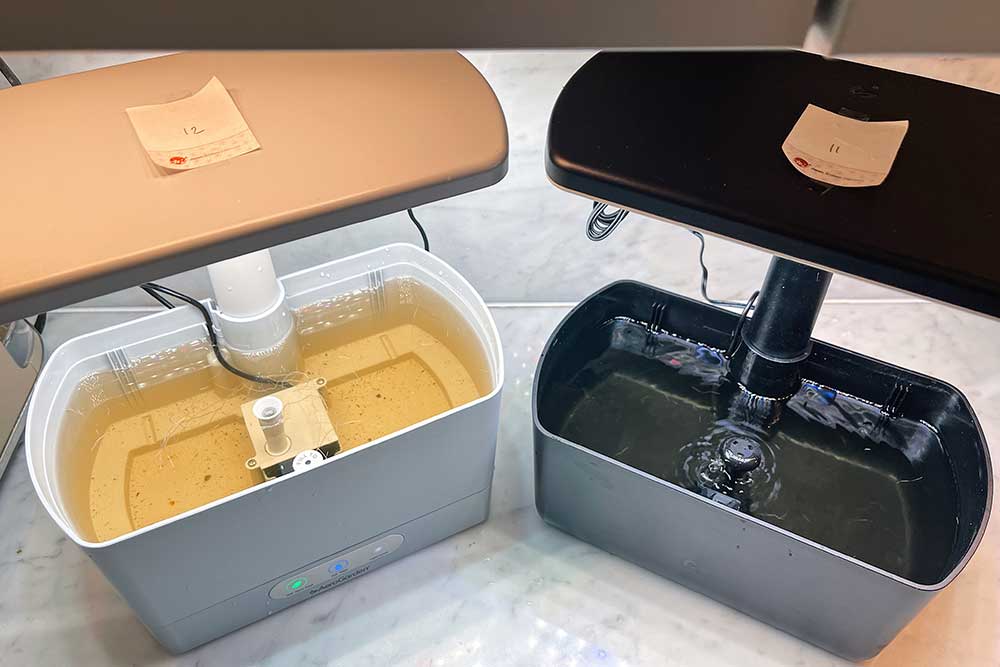
Aerogarden Harvest on the left with nutrients added, Aerogarden Harvest 2.0 on the right with just water
Aerogarden Nutrients vs A and B Nutrients
What I like about Aerogarden vs. other brands is their liquid nutrients are much easier to use when you’re just starting out with indoor gardening.
That (and many other reasons) are why I recommend buying an Aerogarden as your first garden instead of cheaper alternatives on Amazon.
All of the Amazon knockoff gardens include nutrition as well.
But, they use a slightly different style of powder nutrients that need to be mixed and added in 2 parts.
Typically, there’s an A and B bottle and together they contain about 11 different types of minerals and elements.
At setup, you’ll add water to each bottle and shake to ensure all the powders fully dissolve.
Then, you add both parts A and B every 2 weeks.
Like the Aerogarden nutrients, the amount of A and B nutrients you add depends on the garden’s water volume.
A and B Nutrient Amounts
| Garden Capacity | A nutrient | B nutrient |
| 1 Liter | 5 ml | 5 ml |
| 2 Liter | 10 ml | 10 ml |
| 3 Liter | 15 ml | 15 ml |
| 4 Liter | 20 ml | 20 ml |
The cap of each A and B model acts as a measuring cup, with delineations for 5 ml, 10 ml and 15 ml.
Pros of Aerogarden Nutrients
Overall, I think the Aerogarden liquid plant food is great, especially for beginners just getting started with hydroponics!
The nutrients are already in liquid form, so there’s no need to dilute or mix.
Just open and pour – it makes it a very quick, easy process to do (which is crucial because plants need nutrition every 2 weeks).
The capful system makes it easy to portion. No need to measure out specific milliliters.
The formula is also a simple, all-in-one that can be used for any plant type.
I find that it works very well for most plants, although personally I like to supplement with an additional fertilizer like this one for my fruiting plants.
And finally, I like that Aerogarden includes its plant food with every garden purchase, and every seed pod purchase.
Because they’re quite generous with including mini nutrition bottles, I had tons of them and more than enough liquid plant food for a year or so thanks to that!
Cons of Aerogarden Nutrients
However, I do have a couple things I wish the company would change.
First, the bottle design is really poor.
Like, downright frustrating.
Pouring the plant food is a messy process, and often leaves a brown cake-y residue around the cap and bottle rim. It would be nice if there was some kind of spout.
I started using a syringe instead.
I had a couple extra after some medication (you can also buy them on Amazon here).
Syringes allow you to draw up the precise amount of nutrients needed and easily drop it into the garden reservoir.
It’s mess free!
Aerogarden’s nutrients are also a little pricey.
After I eventually ran out of the included small bottle, I purchased Aerogarden’s larger ‘bulk’ option.
It’s a 1 liter bottle that can be used for over 100 feedings, so it’s long lasting!
The large bottle of nutrients retails for $34.95.
Aerogarden also offers a ‘subscribe + save’ option for 30% off, or $24.46 which is a pretty good deal!
You can set it to deliver every 6 months and then modify the delivery as needed.
Throughout the year, Aerogarden runs frequent sales.
I recommend grabbing a couple bottles when they’re discounted and storing them. The bottles last a surprisingly long time!
Once you open a bottle and expose the nutrients to air, Aerogarden nutrients will last for a year.
To prolong it a little longer and prevent degradation, you can store it in the fridge.
Update: Aerogarden has unfortunately gone out of business.
I’ll miss their plant food – no other company has a comparable liquid nutrient!
But, I’ve mostly switched to powder nutrients as they’re easier if you have lots of plants and much cheaper.
I have guides to alternative Aerogarden pod parts here and alternative hydroponic nutrients here.
Follow me on
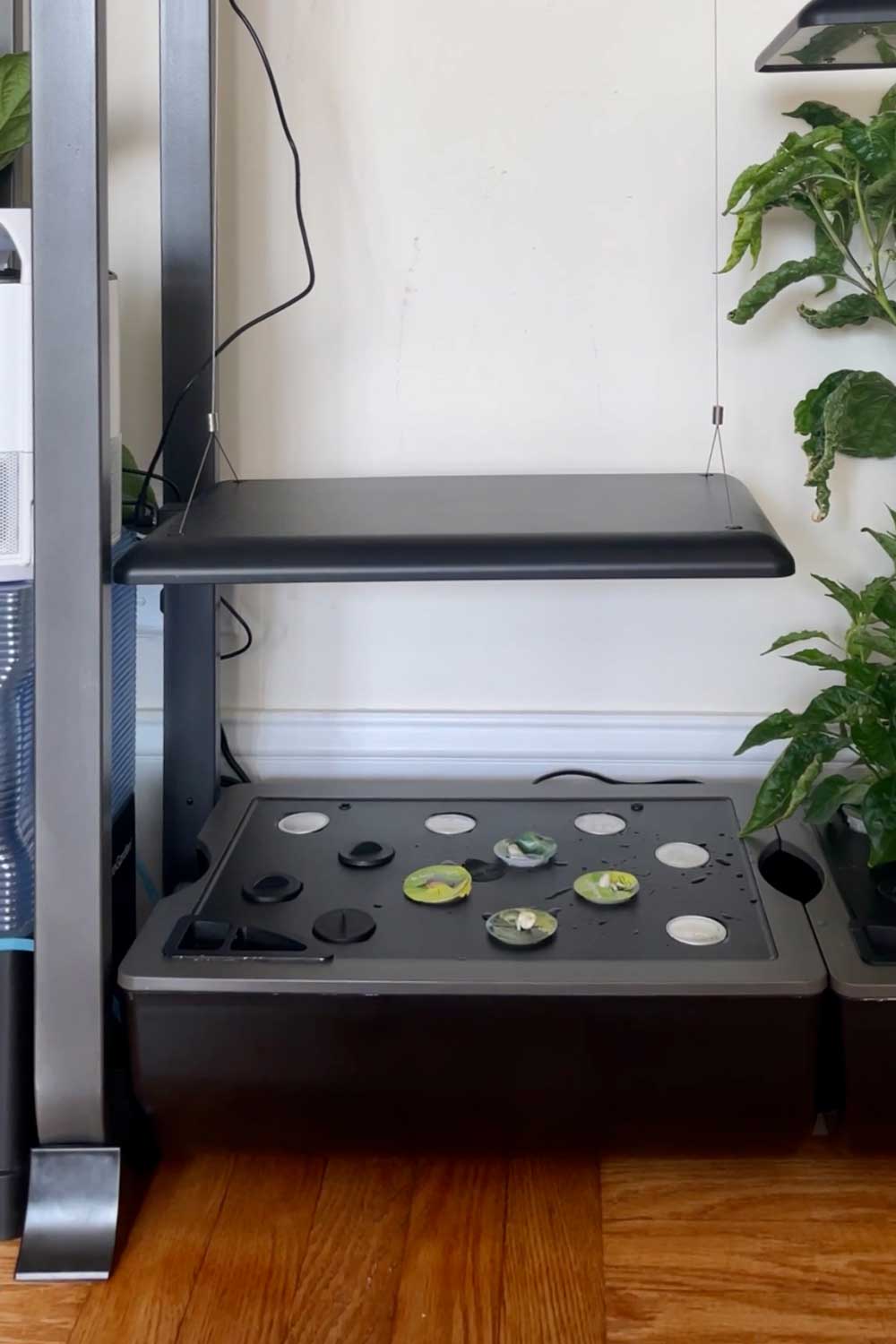
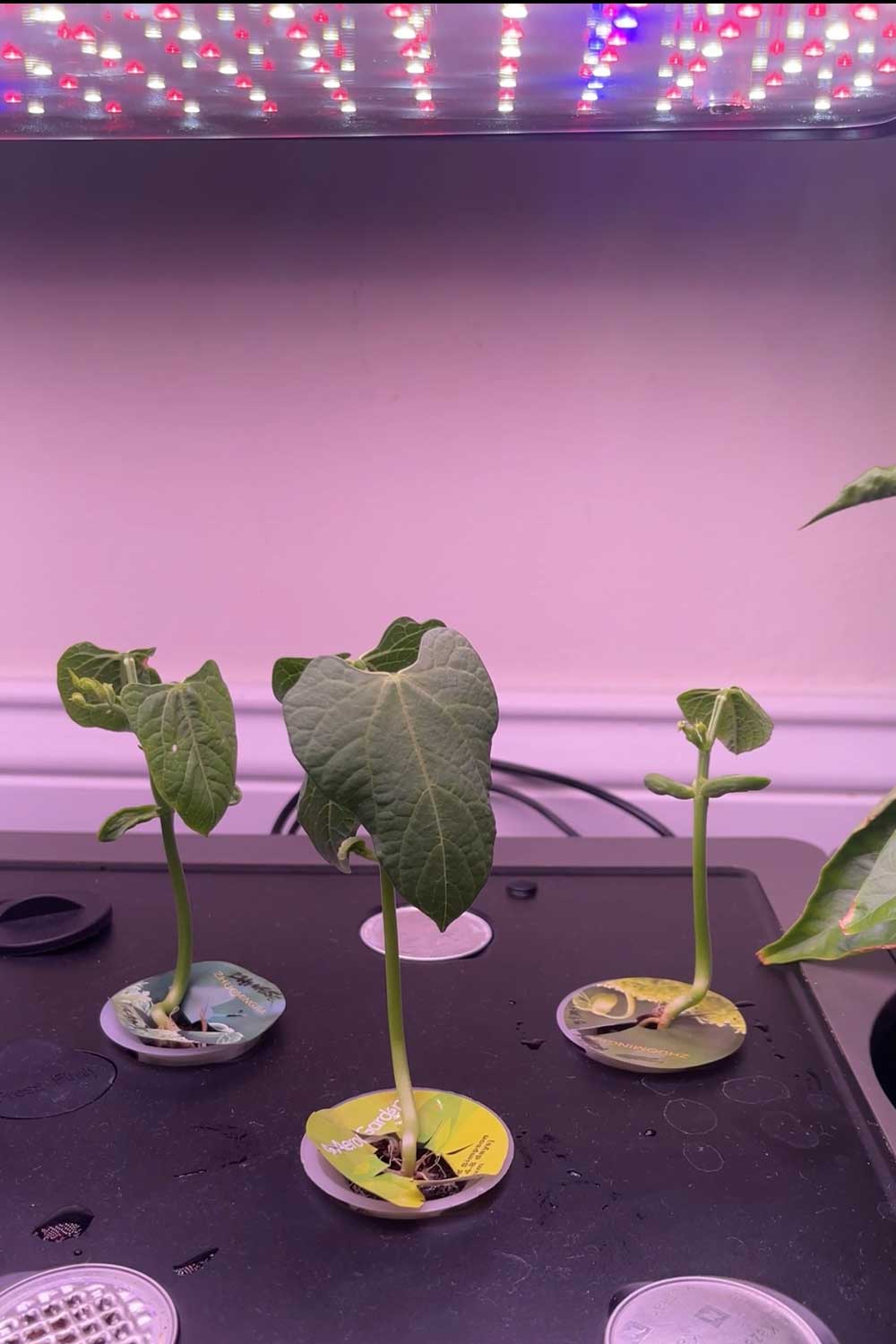
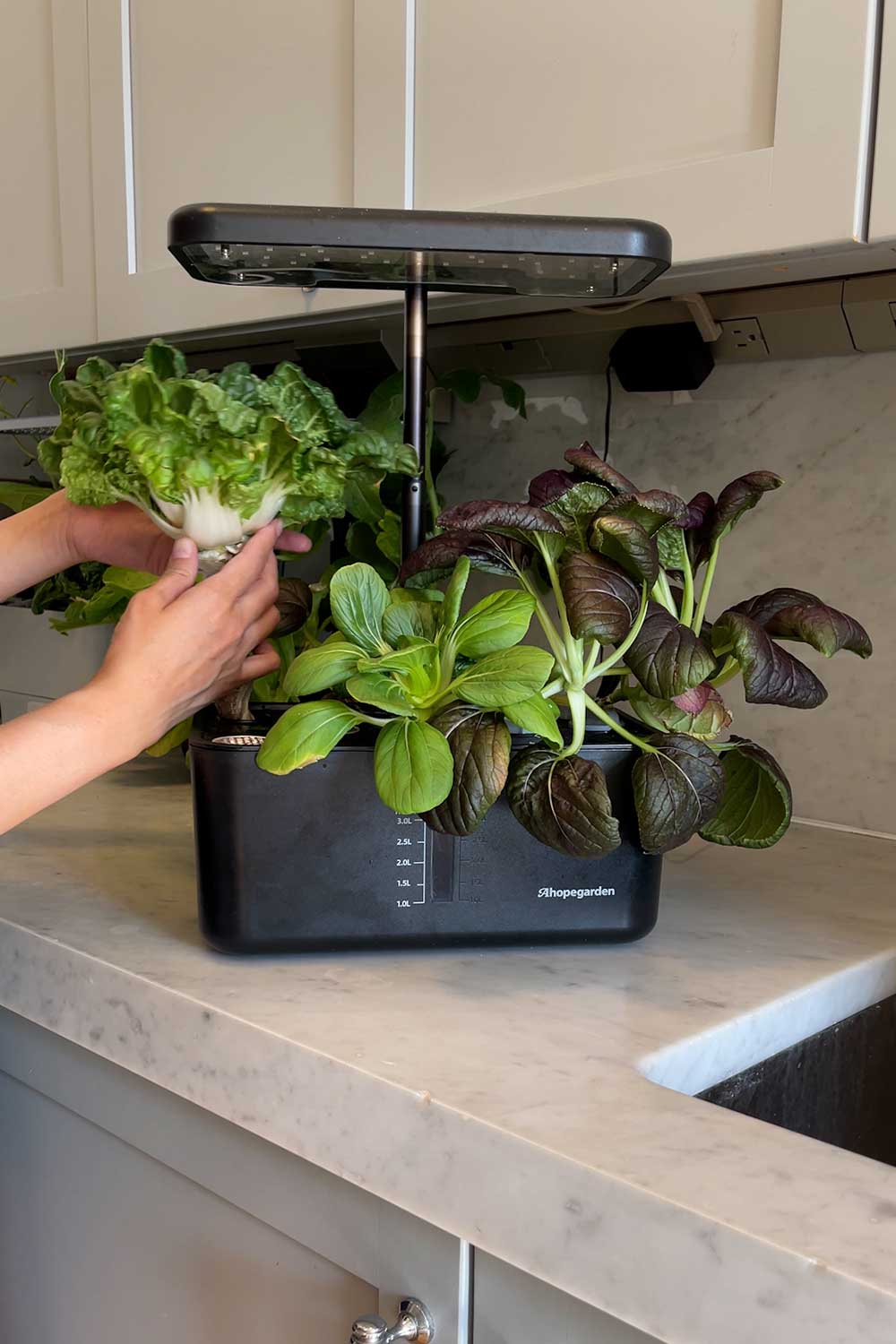
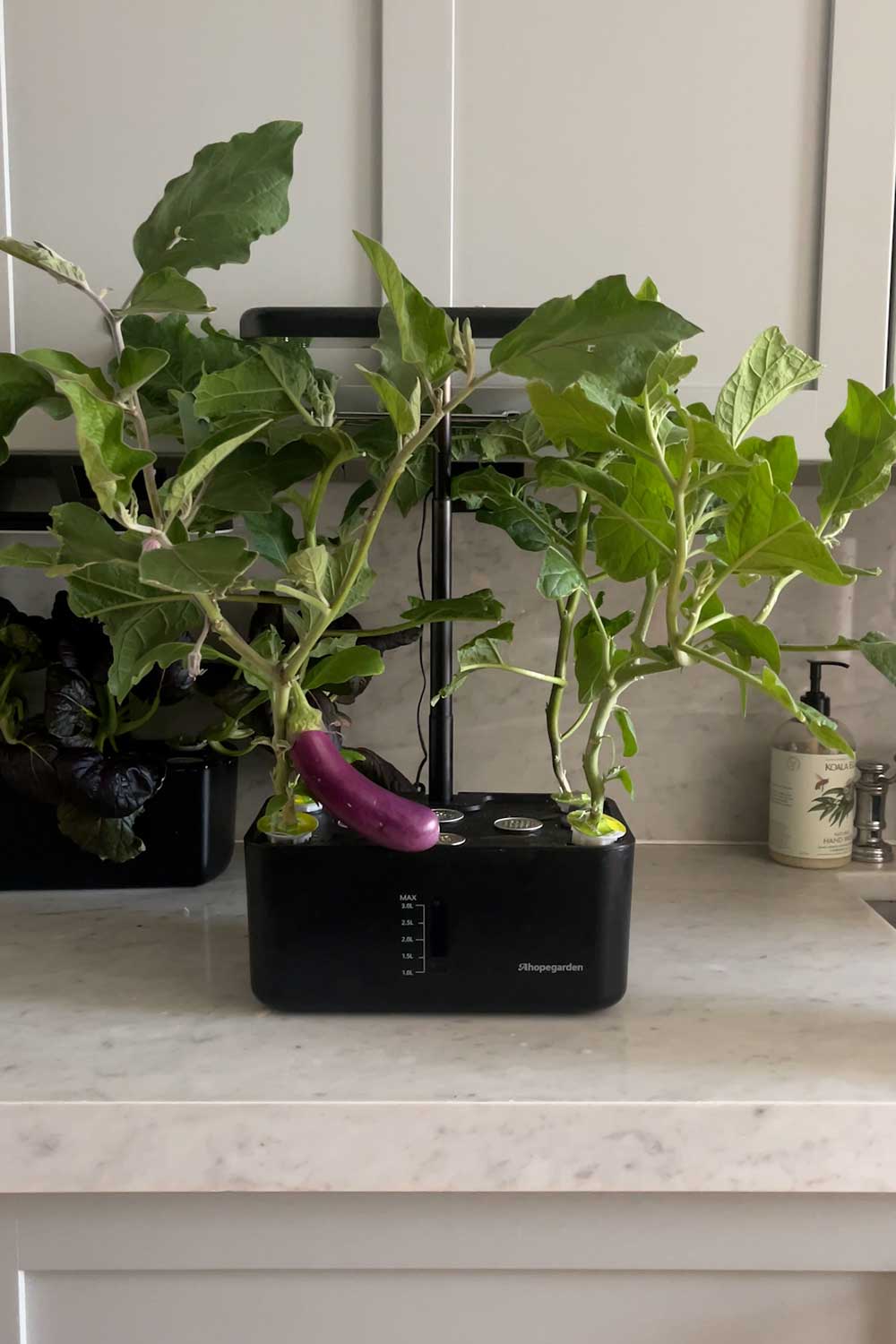
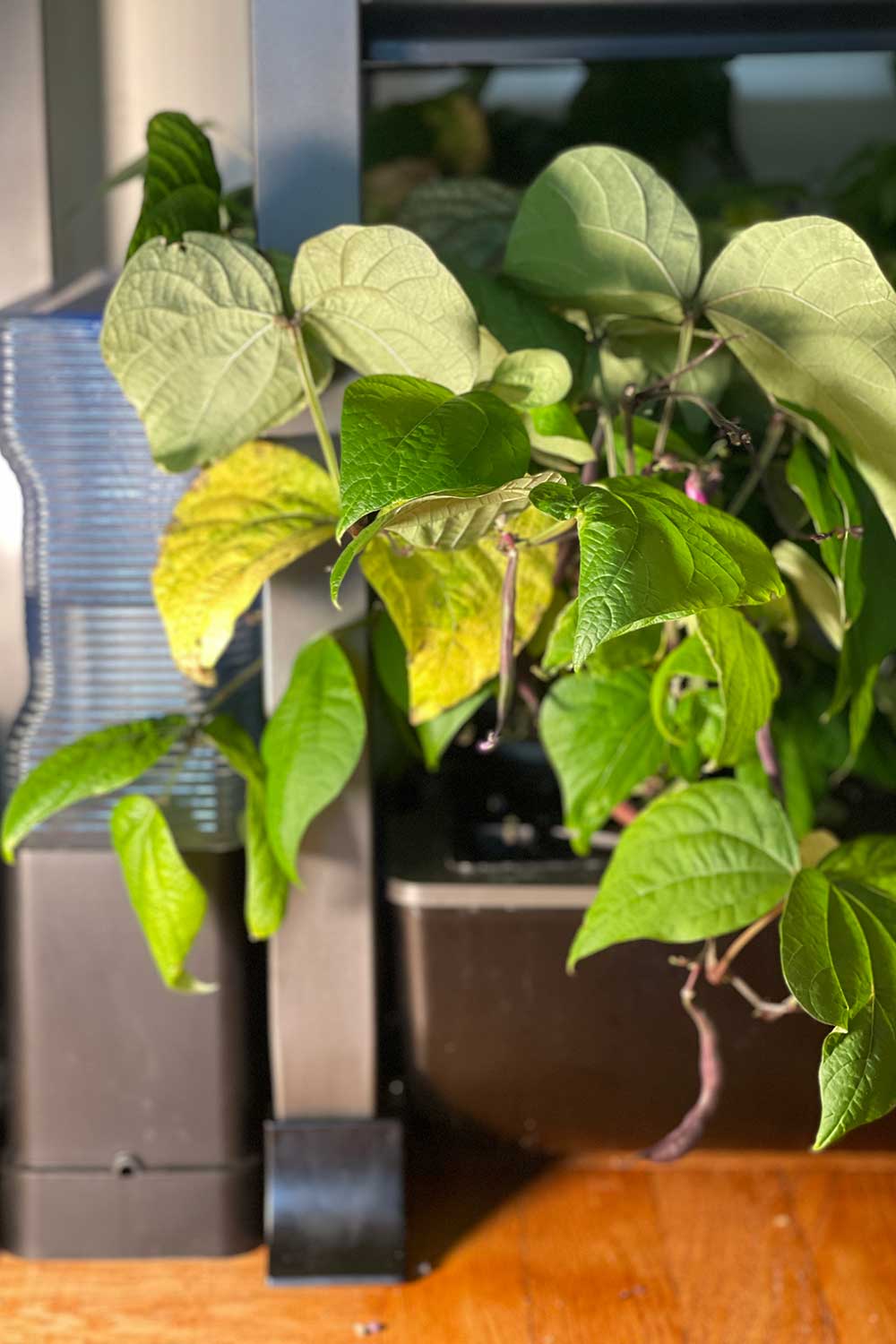
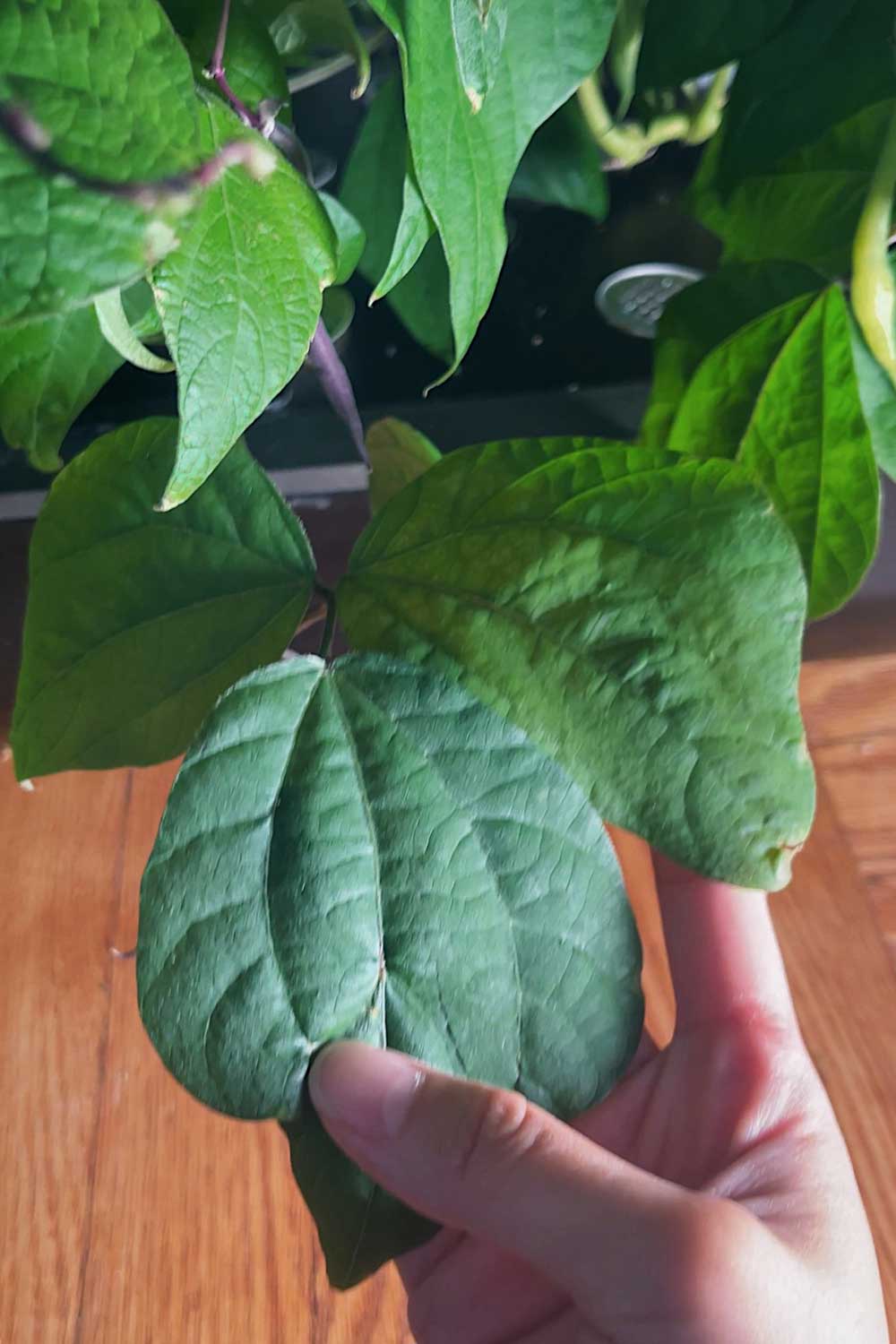
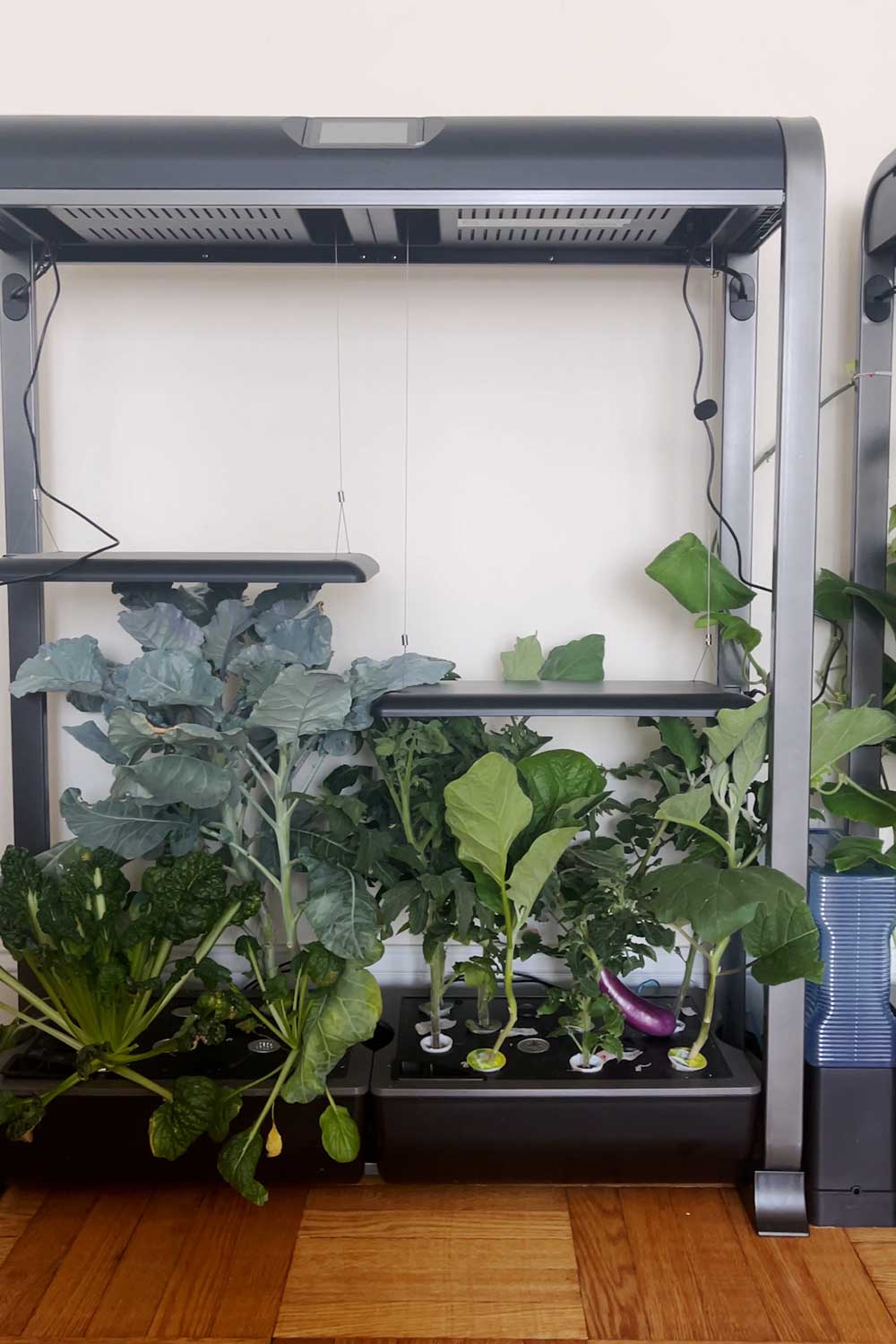
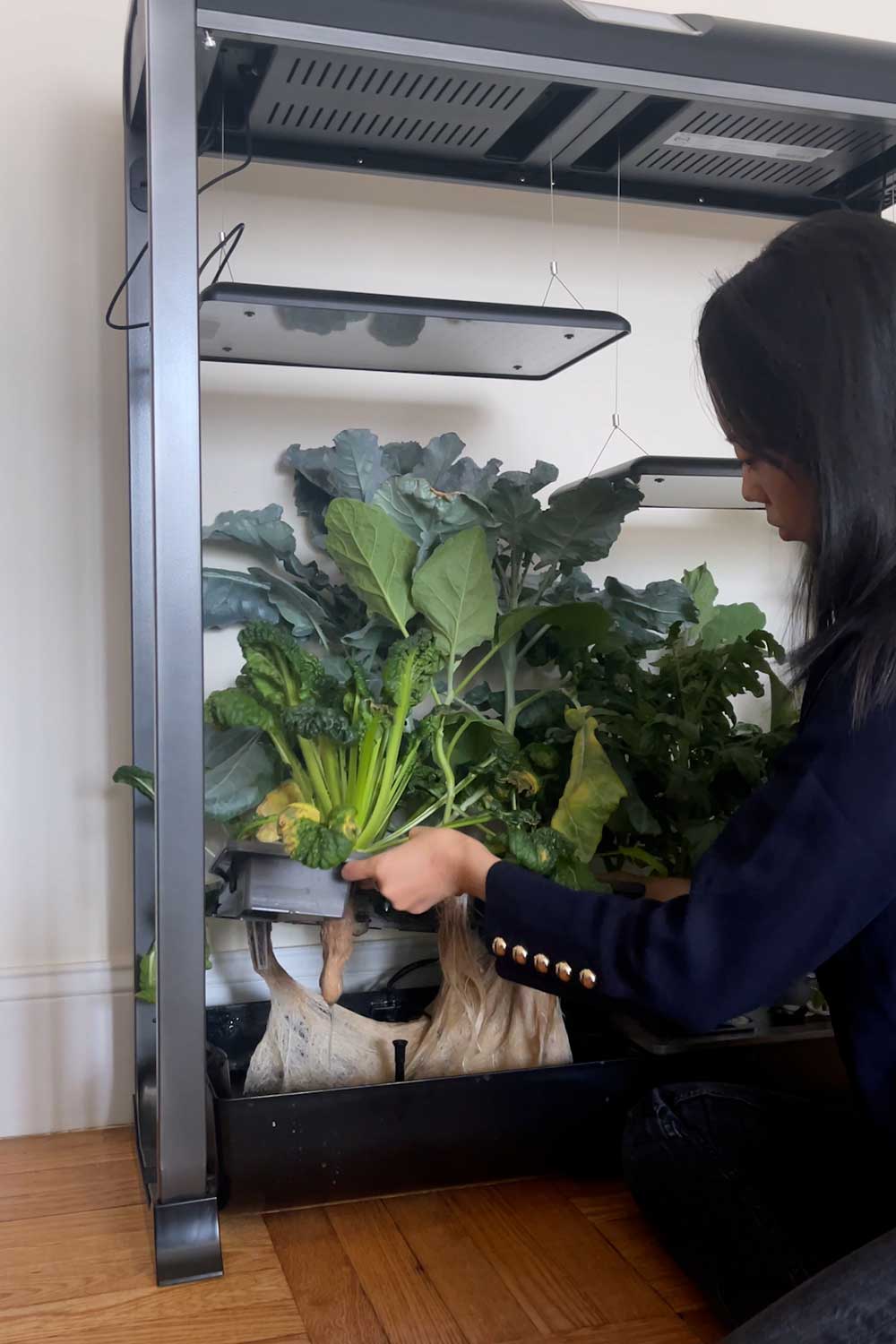
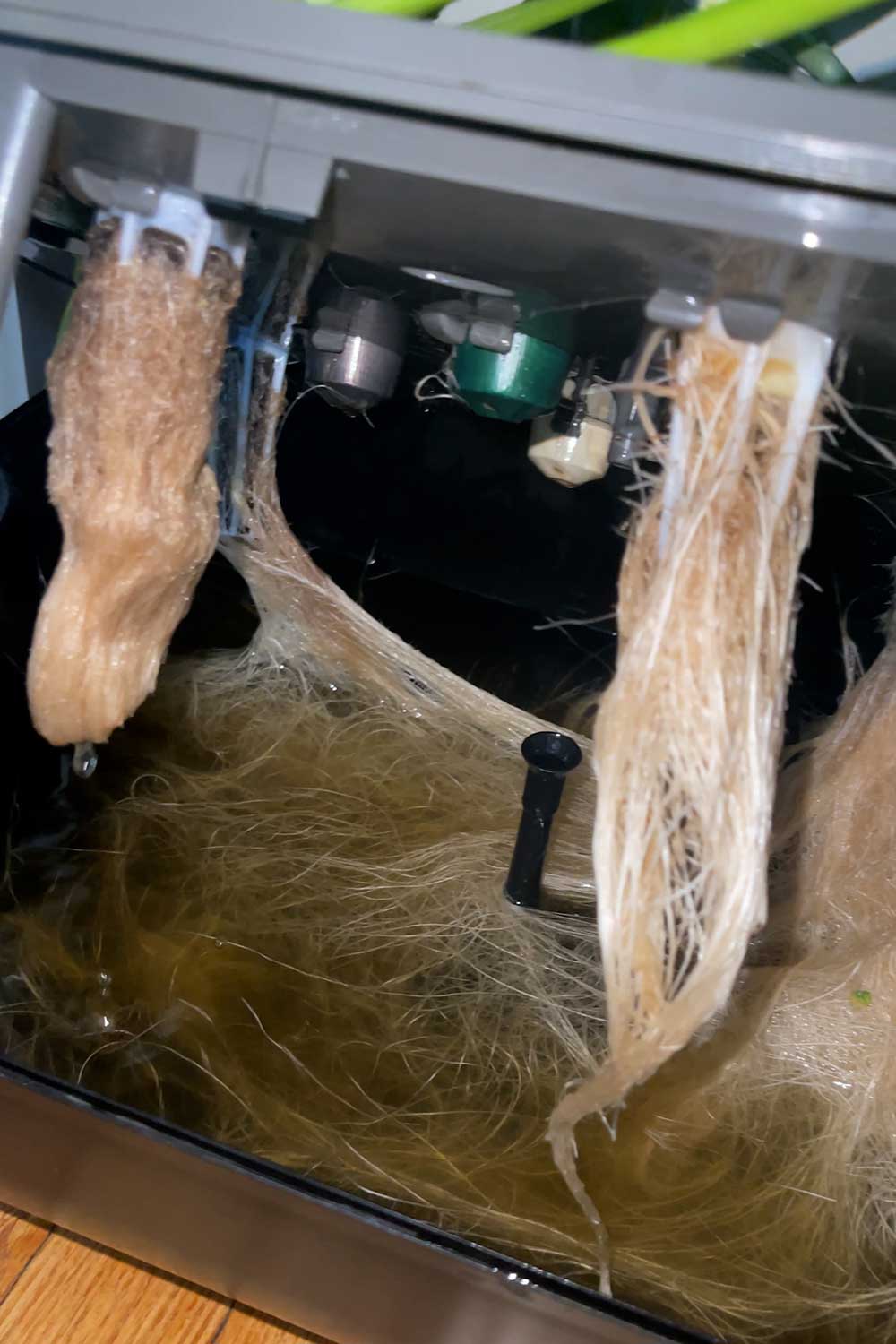
You gave me the answer I was looking for on the first search! I have an AG Bounty (9 pod), but I grow lettuce, and I don’t use all the pods at once. I was wondering if the nutrient measurements were based on number of plants, or water volume. So thanks for the help there!
The only thing I might disagree with is the initial feeding after 2 weeks. A couple of years ago I did a little experiment. I put 2 AG Bounty’s against each other. In one I used AG nutrients, and in the other I did not at all. The one with the nutrients did much better. I can’t exactly remember how they compared after the first 2 weeks. I might have pictures and/or video, but from what I recall, the nutrient lettuce started much faster.
I know every plant is different too. I don’t use the AG pre-seeded pods. I like to get the grow-anything sponges, and experiment with them along with different seeds.
I’m in NJ, but the tap water I use is filtered. Not sure if that helps, but I don’t think I’d be willing to get distilled water every time I needed to refill.
Maybe I’m rambling, but another great addition is the AeroVoir. AeroGarden is going out of business at the end of the year, so I’m not sure if you can even find them anymore. It’s a great way to keep an eye on water level, and keep the AG filled up.
This was great to read, I bookmarked it, and I’m sure I’ll read it again several times!
Author
Hi Joe, thanks for commenting!
About when to add the nutrients, I should probably update my post. You’re right that sprouts with access to nutrients will take off faster.
It’s just that seeds don’t need nutrients to sprout. So if you’re planting fast growing plants like lettuce, as long as you start adding nutes after they’ve germinated, they will benefit from the nutrition and start to grow faster.
Lettuce can sprout in 1-3 days, so 2 weeks after is a bit too late.
I’ll update the post!
Author
And yes! I have a couple aerovoirs – they’re great. I’ve been able to go away for 3-4 weeks by using them.
Sad the company has gone out of business..
I just purchased EZ Grow nutrients which are supposed to be just like AeroGarden nutrients, we will see.
Author
nice, let me know how they do for you!